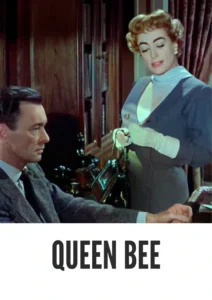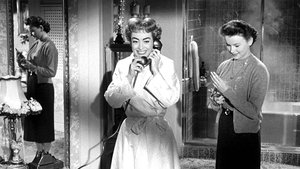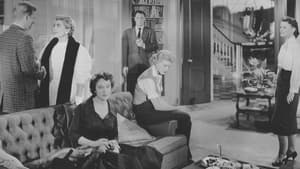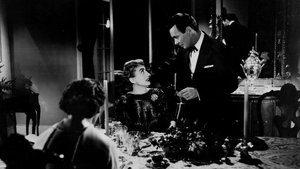Video Sources 0 Views

Download Queen Bee (1955) Colorized HD | Joan Crawford | Southern Gothic Drama
Synopsis

Step into the opulent and treacherous world of 1950s Georgia with Queen Bee, a gripping Southern Gothic drama from 1955, now beautifully colorized for a heightened viewing experience. Starring the iconic Joan Crawford, this film delves into the dark heart of a wealthy Southern family, exposing secrets, betrayals, and the ruthless ambition of one unforgettable woman. Perfect for fans of classic melodrama and those who appreciate complex, morally ambiguous characters, this HD download brings a scandalous and visually stunning piece of cinematic history to your screen.
Queen Bee centers around Eva Phillips (Joan Crawford), the manipulative and controlling matriarch of a prominent Southern family. Eva reigns supreme over her household, wielding her charm and cunning to bend everyone to her will. Her husband, Jud (Barry Sullivan), is trapped in a loveless marriage, while her young cousin, Carol Lee Jansen (Betsy Palmer), arrives seeking refuge and quickly becomes entangled in Eva’s web of deceit.
As the story unfolds, Eva’s true nature is revealed as she systematically destroys the lives of those around her. She sabotages Carol Lee’s budding romance, drives her gentle brother-in-law to despair, and even manipulates her close friend, Jennifer Stewart (Fay Wray). The film explores themes of power, jealousy, and the devastating consequences of unchecked ambition. Queen Bee builds to a dramatic climax as Eva’s machinations are exposed, leading to a tragic and unforgettable finale. Ultimately, Queen Bee is a compelling exploration of the dark side of human nature, set against the backdrop of Southern gentility.
The film features a stellar cast of actors who bring this scandalous story to life:
-
Joan Crawford as Eva Phillips
-
Barry Sullivan as Jud Phillips
-
Betsy Palmer as Carol Lee Jansen
-
John Ireland as Benjamin “Ben” MacLeod
-
Fay Wray as Jennifer Stewart
Queen Bee falls into the genre of Southern Gothic drama, with strong elements of melodrama and film noir. Its themes of manipulation, betrayal, and moral decay, combined with its atmospheric setting, make it a compelling and unsettling film.
Released in 1955, Queen Bee reflects the changing social landscape of post-war America. While the film portrays a world of wealth and privilege, it also hints at the underlying tensions and anxieties of the era. The character of Eva Phillips, a strong and independent woman who defies traditional gender roles, can be seen as a reflection of the evolving role of women in society. Queen Bee offers a glimpse into the complexities of Southern culture during a time of transition.
This colorized version of Queen Bee has been meticulously restored using modern digital techniques, enhancing the visual appeal while preserving the film’s original atmosphere of Southern elegance and dark secrets. The colorization process involved carefully analyzing the grayscale tones of the original black and white footage and assigning appropriate colors to each scene. While the specific software used remains proprietary, the techniques employed included advanced algorithms for color palette selection and image enhancement. This painstaking process brings new life to the characters and settings, making the story even more engaging for modern audiences. While some may debate the merits of colorizing classic films, it introduces these films to a broader audience, ensuring their legacy for future generations.
-
: Ranald MacDougall
-
: Ranald MacDougall
-
: the novel Queen Bee by Edna L. Lee
-
: Ernest Haller
-
: Viola Lawrence
-
: Columbia Pictures Corporation
-
: Columbia Pictures
-
: 95 minutes
-
: MP4
-
: HD (1080p)
-
: Compatible with most devices, including smartphones, tablets, computers, and smart TVs.
Queen Bee (1955) is a compelling melodrama, showcasing Joan Crawford’s talent for playing complex and often unlikeable characters. While some critics found the film to be overly sensational, others praised its performances and its exploration of dark themes. As a scandalous and visually striking film, Queen Bee remains a fascinating example of 1950s cinema and a must-see for fans of classic melodrama.
-
: What is Queen Bee about?
-
A: Queen Bee is a Southern Gothic drama about a manipulative matriarch who destroys the lives of those around her.
-
-
: Is Queen Bee (1955) a well-known Joan Crawford film?
-
A: Queen Bee is a notable film in Joan Crawford’s career, showcasing her ability to portray complex and morally ambiguous characters.
-
-
: Is this version of Queen Bee colorized?
-
A: Yes, this version has been professionally colorized to enhance the viewing experience.
-
-
: What makes Queen Bee interesting for classic film fans?
-
A: Queen Bee offers a glimpse into the dark side of Southern gentility and features a compelling performance by Joan Crawford.
-
-
: What is the download format?
-
A: The download format is MP4, which is compatible with most devices.
-
-
: What resolution is the download?
-
A: The resolution is HD (1080p), providing a high-quality viewing experience.
-
Watch Queen Bee Today!



















